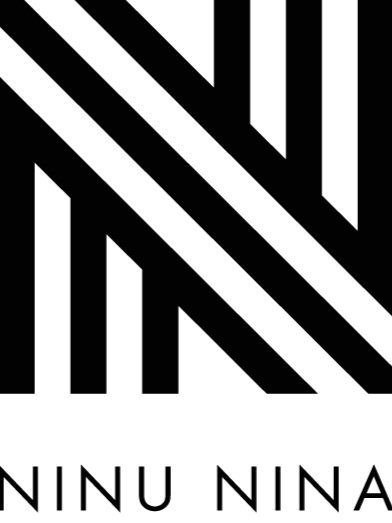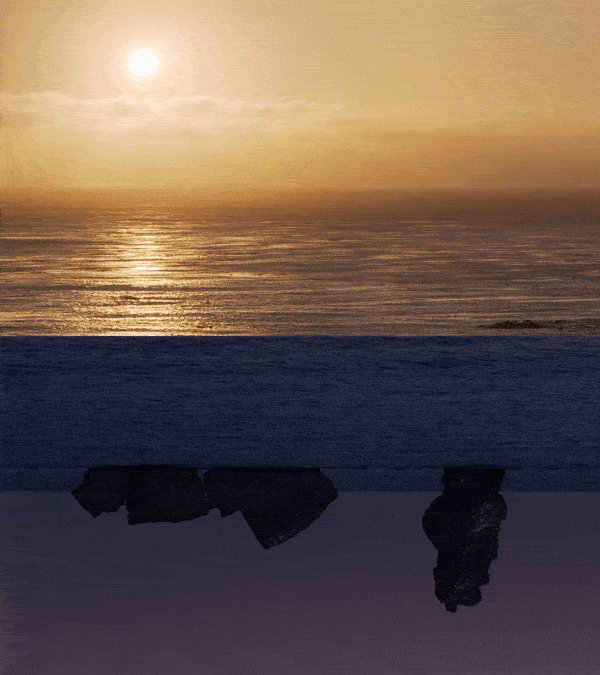YUGE ZHOU'S MOVING COLLAGES RESHAPE OUR DIVIDED WORLD
Yuge Zhou is a Chinese-born, Chicago-based artist whose video art and installations collaging footage in cubist-like arrangements started off as personal projects only to become more relevant at this moment, touching on themes of fear and healing from divisiveness.
Her ongoing series Love Letters finds two dancers creating a gestural “dialogue” on opposite sides of the Chicago river inspired by isolation, interacting from afar during the pandemic. At the age of five, Yuge Zhou became a household name in China as the singer for a popular children’s TV series. Yuge came to the US a decade ago to earn a degree in computer science and subsequently moved into video art and installations. Motivated to transform herself into a hybrid of two cultures, her work addresses connections and longing across natural and urban spaces, as well as the distinctive characteristics of these spaces as sites of shared dreams. She creates immersive experiences through digital collaging and sculptural reliefs.
Yuge has exhibited nationally and internationally in prominent art and public venues and is currently an artist member at NEW INC, New Museum’s art and technology incubator. Recent awards include the 2021 Artist Fellowship Award in Media Arts from the Illinois Arts Council, 2021 SPARK grant from Chicago Artists Coalition and Honorary Mention in the 2020 Prix Ars Electronica in Linz, Austria. Her work has been featured in various publications such as the New York Magazine and HYPEBEAST. Yuge holds a MFA from the School of the Art Institute of Chicago as well as a Master of Science from Syracuse University.
Your greatest inspirations or influences?
Growing up in Beijing, where some of the most modern structures were built around the 2008 Olympic Games, I became more aware of the impact of architecture on a place, as well as the accelerated rhythm of the urban environment. These transformations led me to see the transience of urban spaces: how familiar places can be suddenly made unfamiliar. I try to capture these ephemeral intersections of lives and stories in my work.
On another note, my work is meditative. It’s rooted in Chinese philosophy, which seeks to find peace beneath the turbulence of daily life. Second, my aesthetics are influenced by traditional scroll paintings, which always illustrate a compressed narrative, multiple events happening at the same time. The collage techniques I use to create moving images progress through time and space like these scroll paintings. Combining both scenes and moments creates an uncanny perspective that never loses sight of the individual components.
Tell us a bit about your creative process?
A lot of my older work is improvisational. The process consists of traveling to locations, collecting raw footage and editing, and in that process I search for themes, events, and interesting juxtapositions to assemble into collages. Most of the time, I go to places without a particular mission to seek out the most photographic view. I obviously carry with me the mythology of the places, but I try to be spontaneous and allow chance to happen. For example, in Underground Circuit, I collaged hundreds of clips from the New York subway to evoke the theatricality of mass transit as an urban labyrinth. At the time that I set up my camera, it was impossible to calculate what people would do, but the pattern emerged all the same.
My newer work is more choreographed in that I play the role of both director and producer. Once I’ve conceived the concept, it’s about finding the right technique and collaborators. The more people that are involved in the projects, the more time needed to plan the logistics. Love Letters, a recent video trilogy portraying a courtship dance between two people in a labyrinth metropolis, took two months of Zoom rehearsals and location scouting before the filming of the summer episode took place.
Since September of last year, I’ve been a member at the New York city based NEW INC, which is the New Museum’s art and technology incubator program. At the residency, with the guidance of mentors, especially my dedicated mentor James George, I’ve been exploring new possibilities of incorporating computer mediated performances in my work. Specifically, we are focusing on the last episode of Love Letters by creating computer graphics that interact with the dancers’ movements. The work is going to be shown in 2022 as part of a large public digital art projection program Art on theMART in Chicago.
Additionally, I’m also working on a large outdoor video installation reflecting on the history of the Chinese transcontinental railroad workers to be shown at this year’s ArtPrize festival in September in Grand Rapids, Michigan. As most information about these Chinese workers was deliberately erased in historical documents, researching this project made me understand more the racial and social struggles of the ancestors of the Chinese American community.
How has this year changed your creativity or how you see the world changing moving forward?
The few months of quarantine life has inspired a new direction. I, like many other people, have been longing for a sense of community and collaboration. I also want to create work that is unifying rather than divisive. So I’m continuing to seek out collaborative projects.
Who do you consider to be an icon of our time?
This past year with the pandemic and social movements made me feel that there are so many icons, rather than a single person. I think an icon could be a community of collective resiliency. Despite a year of divisiveness, I believe people are seeking ways to celebrate the goodness of our human nature.
What does wellbeing mean to you?
A balance of Yin and Yang, that means input and output. Our culture (and the art world) values the pursuit of economic success and productivity. Everyone is moving in a hurry, which results in too much output. Global warming, stress and anxiety, obsessions with social media are all consequences of that. By appreciating and preserving nature, our connections with local communities, and living lightly on the earth, we can restore the sacred balance of life and create work with lasting impact that’s driven by humanity rather than by short-term profits.
Website: www.yugezhou.com
Instagram: @yugezhou





